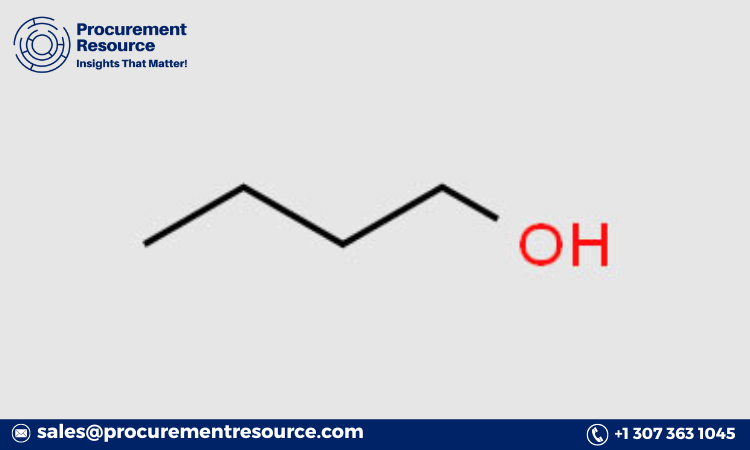Butanol, an essential industrial chemical, has seen growing demand across various sectors, necessitating a detailed cost analysis of its production processes. Procurement Resource has meticulously prepared a Butanol Production Cost Analysis Report that provides an exhaustive assessment of the production processes, market drivers, and product details. This report aims to aid businesses in making informed decisions by offering a thorough understanding of the butanol production landscape.
Request For Sample: https://www.procurementresource.com/production-cost-report-store/butanol/request-sample
Procurement Resource Assessment of Butanol Production Process
Procurement Resource’s assessment of the butanol production process encompasses a detailed analysis of the various methods employed in its production, including ABE fermentation and chemical synthesis. The report delves into the intricacies of each method, highlighting the raw materials used, the steps involved, and the associated costs. By providing a comprehensive breakdown of the production processes, the report enables stakeholders to identify cost-saving opportunities and optimize their production strategies.
Product Definition of Butanol
Butanol, also known as butyl alcohol, is a four-carbon alcohol derived from either petrochemical or biological sources. It exists in four isomeric forms: n-butanol, isobutanol, sec-butanol, and tert-butanol, each with distinct properties and applications. Butanol is widely used as an industrial solvent, in the production of butyl acrylate and butyl acetate, and as an intermediate in the synthesis of various chemicals. Its role as a potential biofuel has also garnered significant interest, positioning it as a versatile and valuable chemical in the global market.
Market Drivers of Butanol
The butanol market is driven by several key factors:
-
Growing Demand in the Paints and Coatings Industry: Butanol is a crucial solvent in the paints and coatings sector, which is experiencing robust growth due to increasing construction activities and automotive production worldwide.
-
Rising Use in Chemical Manufacturing: Butanol serves as an essential intermediate in producing chemicals like butyl acrylate, butyl acetate, and glycol ethers, which are integral to various industrial applications.
-
Advancements in Biofuel Technologies: The development of butanol as a biofuel alternative is gaining momentum, driven by the need for sustainable and environmentally friendly energy sources.
-
Expanding Pharmaceutical and Personal Care Industries: The pharmaceutical and personal care sectors utilize butanol in the synthesis of active ingredients and as a solvent, contributing to its growing demand.
Product Details
Butanol is produced through several methods, each with unique cost implications and production efficiencies. The primary production methods include:
-
ABE Fermentation: This traditional method involves the fermentation of sugars by Clostridium bacteria, yielding acetone, butanol, and ethanol. The process has been refined over the years to improve yield and reduce costs, making it a viable option for sustainable butanol production.
-
Chemical Synthesis: This method involves the catalytic hydrogenation of butyraldehyde, derived from propylene via the oxo process. Chemical synthesis is a well-established method with high production efficiency and scalability.
-
Biotechnological Methods: Advances in genetic engineering have led to the development of novel biotechnological methods for butanol production, such as the use of engineered microorganisms and lignocellulosic biomass. These methods hold promise for sustainable and cost-effective butanol production in the future.
Key Questions
The Butanol Production Cost Analysis Report addresses several critical questions to aid businesses in making informed decisions:
- What are the key cost components in the butanol production process?
- How do different production methods compare in terms of cost efficiency and scalability?
- What are the major raw materials used in butanol production, and how do their prices impact overall production costs?
- What are the primary market drivers influencing butanol demand, and how are they expected to evolve?
- How can businesses optimize their production processes to achieve cost savings and improve profitability?
Latest News and Update
Recent developments in the butanol market highlight the ongoing advancements and innovations in production technologies and applications:
-
Biofuel Research: Researchers are exploring new biotechnological methods for butanol production, aiming to improve yield and reduce costs. Innovations in genetic engineering and fermentation technologies are paving the way for sustainable bio-butanol production.
-
Environmental Regulations: Stricter environmental regulations are driving the adoption of cleaner and more sustainable production methods. Companies are increasingly investing in bio-based butanol production to meet regulatory requirements and reduce their environmental footprint.
-
Market Expansion: The butanol market is witnessing significant expansion, with new production facilities being established in emerging markets. This trend is expected to enhance the global supply chain and reduce production costs through economies of scale.
Looking for an exhaustive and personalized report that could significantly substantiate your business?
Procurement Resource’s Butanol Production Cost Analysis Report offers a detailed and personalized assessment tailored to your business needs. Our comprehensive report provides valuable insights into the production processes, market dynamics, and cost components, enabling you to make informed decisions and optimize your production strategies.
Some of the common requests we receive from our clients include:
- Customized Cost Analysis: Tailored cost analysis reports that focus on specific production methods, raw materials, and market conditions relevant to your business.
- Benchmarking Studies: Comparative studies that benchmark your production processes against industry standards, identifying areas for improvement and cost savings.
- Market Forecasting: Detailed market forecasts that provide insights into future demand trends, price fluctuations, and potential growth opportunities.
- Risk Assessment: Comprehensive risk assessments that identify potential challenges and threats in the butanol market, enabling you to develop effective mitigation strategies.
- Supply Chain Optimization: Strategies for optimizing your supply chain to reduce costs, improve efficiency, and enhance overall profitability.
Conclusion of Procurement Resource and Butanol
Procurement Resource’s Butanol Production Cost Analysis Report is an invaluable tool for businesses seeking to gain a competitive edge in the butanol market. By providing a comprehensive assessment of the production processes, market drivers, and cost components, the report equips stakeholders with the knowledge and insights needed to make informed decisions and optimize their production strategies. Whether you are looking to expand your production capacity, improve cost efficiency, or explore new market opportunities, our detailed and personalized report will significantly substantiate your business endeavors.
Procurement Resource remains committed to delivering high-quality, insightful reports that cater to the unique needs of our clients. With our extensive industry expertise and rigorous analytical approach, we ensure that our reports provide actionable insights and valuable guidance for your business. Explore the benefits of our Butanol Production Cost Analysis Report and take the first step towards enhancing your production processes and achieving sustainable growth in the butanol market.










